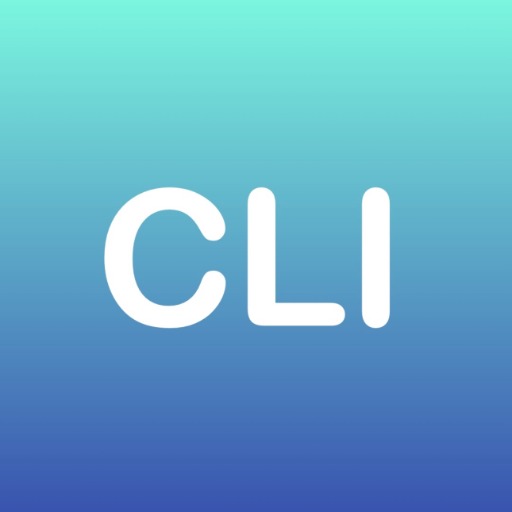PCK in Physics - Waves and Optics Tutor-waves and optics physics tutor
AI-powered insights for teaching waves and optics
Explain the principle of superposition in waves.
What are the key differences between transverse and longitudinal waves?
How does refraction work in optics?
Describe the dual nature of light.
Related Tools
Load More
Physics Tutor
Explaining Physics with Clarity and Insight

Undergrad Physics GPT
I'm an AI tutor specializing in undergraduate physics, here to explain concepts and solve problems.

IB Physics Tutor
Your personal tutor to master IB Physics

Graduate Level Physics GPT
Expert in advanced physics, insightful and precise
Professor Phy.
Your Personalized Physic Tutor. Upload an Image or Type Your Question to Begin. Create an account at nerd-notes.com to supercharge your learning with Phy.

Physic Homework Helper
Solver & explainer for complex physics problems with step-by-step guidance.
20.0 / 5 (200 votes)
Introduction to PCK in Physics - Waves and Optics Tutor
The PCK in Physics - Waves and Optics Tutor is a specialized pedagogical tool designed to support learners and educators in mastering the domain of waves and optics within physics. 'PCK' stands for Pedagogical Content Knowledge, emphasizing not just the subject matter expertise, but also the strategic instructional methods that help in teaching complex physics concepts. The tool is created with the dual purpose of explaining intricate concepts in waves and optics while integrating pedagogical strategies that make these concepts easier to understand and teach. A unique feature is its alignment with the needs of upper-division and graduate students, with a focus on secondary education preparation, ensuring a deep and meaningful engagement with content. For example, if a student is struggling to understand how wave superposition leads to interference patterns, the PCK tutor doesn't just offer the theoretical explanation. It dives into different pedagogical methods such as visual analogies, conceptual breakdowns, and real-world applications like double-slit experiments. This ensures the learner grasps the fundamental principles and can apply them to both theoretical and experimental scenarios.

Core Functions of PCK in Physics - Waves and Optics Tutor
In-depth Concept Explanation
Example
Explaining the intricacies of diffraction, including Fraunhofer and Fresnel diffraction patterns, with detailed wavefront analysis.
Scenario
In an upper-division optics course, a student learning about diffraction may struggle to visualize how wavefronts bend and interfere when passing through slits. PCK provides both the mathematical framework (like Huygens’ principle) and pedagogical techniques such as step-by-step construction of wavelets to help the student visualize and understand the process.
Pedagogical Strategies for Teaching
Example
Offering analogy-based teaching methods for complex topics like polarization or the Doppler effect, linking them to everyday phenomena.
Scenario
A high school physics teacher preparing lessons on wave polarization might benefit from PCK’s ability to suggest analogies, like comparing polarized light to vibrations of a string, helping students relate the abstract concept to something tangible. These methods make classroom instruction more effective.
Application of Wave and Optics Principles
Example
Solving real-world problems involving thin-film interference, such as those found in anti-reflective coatings or soap bubbles.
Scenario
A graduate student in a physical optics course might need help with calculating the reflectance in thin-film coatings used in engineering optical devices. PCK provides detailed guidance on how to apply the principles of constructive and destructive interference to calculate optical path differences and reflectivity for different wavelengths.
Ideal Users of PCK in Physics - Waves and Optics Tutor
Upper-Division and Graduate Physics Students
These students often require advanced explanations of waves and optics phenomena, as well as detailed mathematical derivations and experimental setups. PCK is tailored to their need for depth and precision, offering comprehensive support in understanding and applying complex principles like wave-particle duality, advanced diffraction theories, and nonlinear optics.
Secondary Education Physics Teachers
High school physics teachers benefit from PCK’s focus on pedagogical methods for teaching challenging physics concepts like wave interference, the Doppler effect, and the electromagnetic spectrum. PCK offers a range of teaching strategies and analogies, enabling teachers to break down difficult concepts into digestible lessons that their students can grasp, ultimately improving classroom engagement and learning outcomes.

How to Use PCK in Physics - Waves and Optics Tutor
Visit aichatonline.org for a free trial
You can start using the PCK in Physics - Waves and Optics Tutor by visiting the website without needing to log in or sign up for ChatGPT Plus.
Familiarize yourself with the PCK framework
Review the Pedagogical Content Knowledge (PCK) concepts specific to waves and optics. This will help you understand how this tool structures content for teaching and deep understanding.
Ask detailed questions about waves and optics
Use the tutor to explore in-depth topics such as wave interference, diffraction, polarization, and more. The tutor excels in providing comprehensive explanations.
Use for curriculum development and lesson planning
If you're a secondary or post-secondary physics educator, apply the tool to help you develop lesson plans, instructional strategies, and learning materials tailored to waves and optics.
Optimize learning with feedback and clarification
Take advantage of the tutor’s interactive features to ask follow-up questions and clarify doubts. This enhances understanding and improves teaching strategies.
Try other advanced and practical GPTs
Sales GPT
AI-Powered Sales Optimization

Contract Reviewer
AI-powered contract risk detection

Landing Page Wizard
AI-powered insights for landing page optimization.

ChatPC - connect with macOS
AI-powered task automation for Mac.
English CLI
AI-powered English learning made easy

Advanced content writing template | Topical Map
AI-Powered Content Creation Made Easy

Fantasy Proxy Art
AI-Powered Fantasy Art for Creative Minds

Variable Name Generator
Generate consistent, clear, and descriptive variable names with AI assistance.

Price Bot - Pricing made easy
AI-powered pricing made easy.
PDF AI
AI-powered PDF analysis and management

Steve Urban's Career Coaching, by Riderflex
AI-powered career guidance tailored by Steve Urban.

Your Founder Coach
AI-driven advice for startup growth
- Lesson Planning
- Curriculum Design
- Concept Mastery
- Graduate Studies
- Misconception Analysis
Q&A About PCK in Physics - Waves and Optics Tutor
What makes this tutor different from other physics resources?
This tutor focuses on the Pedagogical Content Knowledge (PCK) framework, which combines subject knowledge with teaching strategies. It helps educators teach complex waves and optics concepts more effectively, ensuring deeper student understanding.
Can this tool help with advanced topics in optics?
Yes, the tool is designed to cover advanced topics such as wave-particle duality, optical coherence, and Fourier optics, providing detailed explanations suited for higher-level learners.
How can I use this tool to improve my teaching of waves?
It helps you by offering insights into common student misconceptions, key learning objectives, and effective instructional strategies to teach concepts like standing waves, resonance, and wave superposition.
Is this tool suitable for graduate-level physics students?
Absolutely. The tutor can assist graduate students by delving deep into complex topics like quantum wave mechanics, optical interferometry, and other specialized areas of study in waves and optics.
How does this tutor support curriculum development?
The tool aids in structuring a well-rounded curriculum by offering detailed explanations, common challenges, and pedagogical strategies for teaching waves and optics, enabling educators to craft more effective lesson plans.